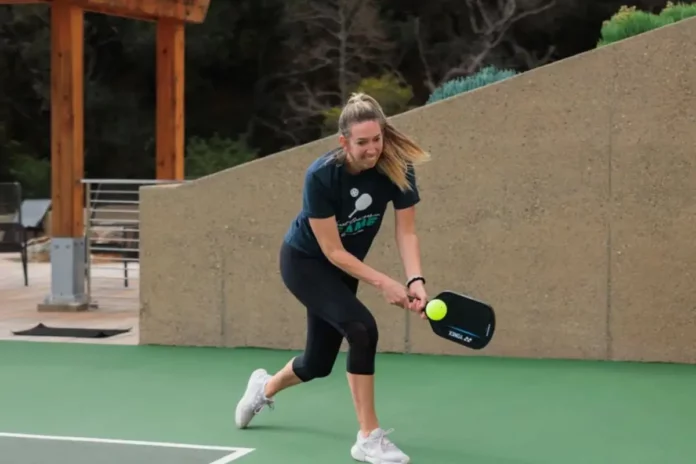Smarter Shot Selection in Pickleball: Shot selection in pickleball plays a crucial role in controlling the flow of the game. Beginner and intermediate players often face challenges in three specific scenarios: the bailout dink, the low mid-court drive, and premature cross-court attacks. Addressing these situations can lead to more consistent and effective play.
Understanding the Bailout Dink
When pulled wide and off-balance, players frequently resort to the bailout dink, often attempting an aggressive cross-court shot that risks popping up. Proper execution involves:
- Keeping the paddle tip down and lifting the ball towards the middle or down the line.
- Avoiding cross-court shots, which can leave the court exposed and make recovery to the center more challenging.
Hitting down the line may invite Ernie to play from opponents, so careful placement is essential. Returning to the middle after the shot creates time to reset while aiming for the middle simplifies defensive positioning.
When opponents execute a bailout dink, an aggressive stance with the paddle positioned up can prepare for elevated shots. Redirecting the ball toward their feet can turn defense into offense. High balls, particularly around shoulder level, present opportunities to attack directly.
Managing the Low Mid-Court Drive
The low mid-court drive often tilts the advantage toward the net team, especially if their paddles are prepared for a quick response. A poorly executed drive can:
- Expose feet to counterattacks.
- Force defensive play in the transition zone, increasing the likelihood of a pop-up.
In many cases, a drop shot proves more effective, as it neutralizes the opposition’s attack and facilitates a smoother transition toward the kitchen. For a drive to be effective, the ball must be sufficiently high to avoid creating vulnerabilities.
When countering a low mid-court drive, keeping the paddle up and directing the ball toward the opponent’s feet is crucial. Shots that are overly hard or high are better left to sail out. Successfully redirecting the drive can shift the momentum back to a favorable position.
Avoiding the Cross-Court Partner Trap
Cross-court attacks, though enticing, often carry risks, especially for less experienced players. These shots frequently result in counterattacks directed at the partner. Strategies to minimize this pickleball risk include:
- Targeting the middle or down the line, enabling better positioning for a controlled follow-up shot.
- Recognizing when aggressive coverage by opponents opens the cross-court shot as a calculated option.
Balancing foundational shot-selection rules with strategic exceptions is vital. Calculated adjustments prevent situations where the partner is left exposed, maintaining control and fluidity in gameplay.
News in Brief: How Smarter Shot Selection in Pickleball
Shot selection errors in pickleball, such as poor bailout dinks, risky low mid-court drives, and premature cross-court attacks, can lead to defensive disadvantages. Effective pickleball strategies include focusing on precise paddle positioning, hitting safer zones, and anticipating elevated balls from opponents.
Prioritizing drop shots over low drives and carefully targeting middle or down-the-line areas reduces risks and keeps the rally under control. Recognizing strategic exceptions allows for smarter play and prevents partners from being placed in vulnerable situations.
ALSO READ: Mega Winter Classic Pickleball Tournament Set to Thrill Pickleball Fans with a Massive Prize Money


